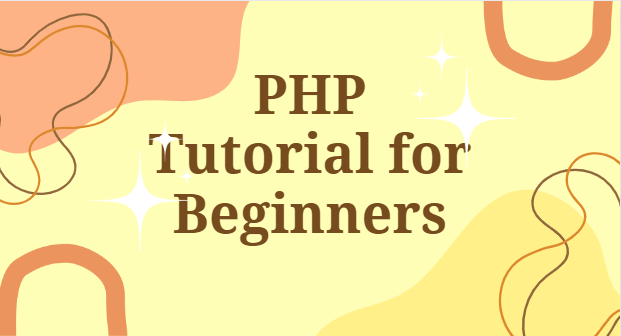PHP Basics for Beginners - A beginner's guide to PHP programming, including essential concepts and example code. Learn the fundamentals of PHP for web development.
- PHP, which stands for "Hypertext Preprocessor," is a widely used server-side scripting language in web development.
- It allows you to create dynamic websites by processing data on the server before sending it to the user's browser.
- PHP is embedded within HTML, enabling you to mix PHP and HTML code seamlessly in your web applications.
What is PHP:
- PHP is a server-side scripting language designed for web development.
- It's commonly used for tasks like handling form data, interacting with databases, and generating dynamic web pages.
- PHP code is executed on the web server, and the results are sent to the user's browser as standard HTML.
Setting Up PHP:
- To work with PHP, you need a web server, a database (such as MySQL), and the PHP interpreter.
- You can install these components individually, or use pre-configured packages like XAMPP or WAMP, which include all the necessary software in one bundle.
- Once your environment is set up, you can create and run PHP scripts.
Hello, World in PHP:
- The "Hello, World" example is a classic introduction to a programming language. It demonstrates the basic syntax and structure of PHP.
- In this example, you create a PHP script in a file with a .php extension, and you use the
echostatement to output "Hello, World!" to the browser. - When you access the script through a web server, you'll see the "Hello, World!" message displayed in your browser.
Basic PHP Syntax:
- PHP code is enclosed within PHP tags, which are typically
<?phpto start and?>to end PHP code. - Each PHP statement ends with a semicolon (;).
- You can embed PHP code within HTML documents, allowing you to generate dynamic content.
<?php
echo "Hello, PHP!";
?>
Variables:
- Variables in PHP are used to store and manipulate data.
- Variable names start with a dollar sign ($), followed by the variable name.
- In the provided example, a variable named
$messageis assigned the value "Hello, PHP!" and is then displayed using theechostatement.
<?php
$message = "Hello, PHP!";
echo $message;
?>
Comments:
- Comments in PHP are used to document your code and make it more understandable.
- PHP supports single-line comments, denoted by
//, and block comments, enclosed within/*and*/. - Comments are ignored by the PHP interpreter and do not affect the code's functionality.
<?php
//echo "Hello, PHP!";
/*echo "Hello, PHP!";*/
?>
Conclusion:
- In above PHP tutorial provides a fundamental introduction to PHP for beginners, covering essential concepts and basic syntax.
- It explains how to set up a PHP development environment, create a simple "Hello, World" script, and introduces variables and comments.
- For more info about PHP, Please visit official website.
